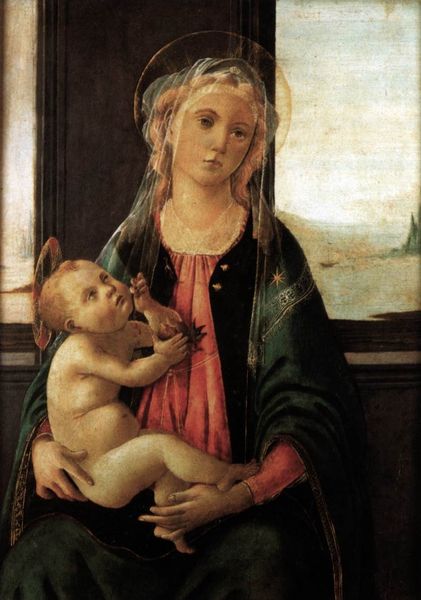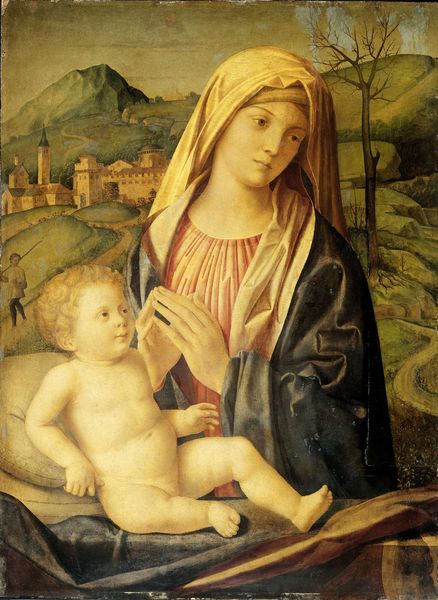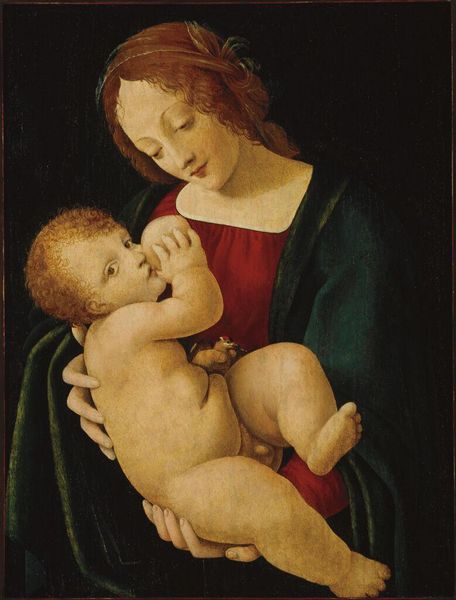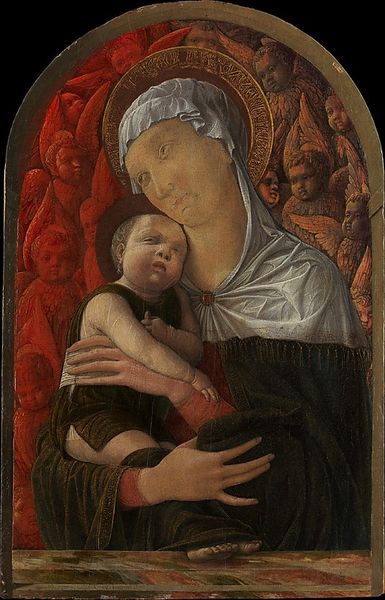
painting, oil-paint
#
portrait
#
high-renaissance
#
painting
#
oil-paint
#
figuration
#
madonna
#
oil painting
#
child
#
christianity
#
history-painting
#
italian-renaissance
#
virgin-mary
#
christ
Dimensions: 155 x 71 cm
Copyright: Public domain
Curator: Painted around 1466, this is Filippo Lippi’s oil on wood panel titled "Madonna and Child." It's part of a private collection, and is one of the gems of the early Italian Renaissance. What's your first impression? Editor: The immediate effect is one of tenderness. There's a delicate balance of color, mostly muted tones except for that almost shockingly bright sleeve of the Madonna. The artist’s precision creates a sense of serenity, of restrained emotion. Curator: Restraint, perhaps born of necessity. Paintings of the Madonna and Child were frequently commissioned for private devotion. The Renaissance witnessed a shift from the representation of religious figures as divine, distant entities toward portraying them with more human characteristics, and Lippi embodies that trend. We see that with Mary embracing Jesus and how the child seeks comfort. Editor: Certainly, we see a softened, almost secular interpretation here. Lippi's focus on realism – the texture of the fabrics, the soft light on the faces – suggests an artist grappling with new ways of seeing and representing the world. What about the way the artist places figures inside a defined space? I think Lippi plays a formal game that provides more opportunities to study perspective. Curator: I agree. Lippi humanizes Mary, positioning her not just as a divine figure, but as a mother. We have to think, though, about gender and representation in 15th-century Italy. Here, Mary symbolizes ideals of motherhood and piety reinforced by patriarchal societal structures of that era, regardless of the tenderness that we see in her features. Lippi reflects those ideas but also provides the opportunity for something softer, maybe something new for women. Editor: And what about the haloes, reduced to delicate golden threads? A symbolic reduction, a formal paring-down. The intention may very well have been the same as in that more radical realism, the desire to remove the barrier between observer and observed. Curator: Indeed. We must consider the multiple interpretations within such an intimate, yet formally constructed scene. Editor: Ultimately, the beauty of this work, for me, lies in its sophisticated treatment of light and shadow. Lippi's technical skill draws the viewer in. Curator: For me, it is the opportunity to examine this historical artwork through the multiple, modern contexts, reminding us of art’s lasting impact, encouraging conversations about its influence across time and cultures.
Comments
No comments
Be the first to comment and join the conversation on the ultimate creative platform.













